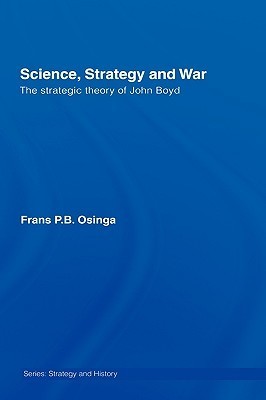What do you think?
Rate this book


John Boyd is often known exclusively for the so-called OODA loop model he developed. This model refers to a decision-making process and to the idea that military victory goes to the side that can complete the cycle from observation to action the fastest.
This book aims to redress this state of affairs and re-examines John Boyd 's original contribution to strategic theory. By highlighting diverse sources that shaped Boyd 's thinking, and by offering a comprehensive overview of Boyd 's work, this volume demonstrates that the common interpretation of the meaning of Boyd 's OODA loop concept is incomplete. It also shows that Boyd 's work is much more comprehensive, richer and deeper than is generally thought. With his ideas featuring in the literature on Network Centric Warfare, a key element of the US and NATO 's so-called military transformation programmes, as well as in the debate on Fourth Generation Warfare, Boyd continues to exert a strong influence on Western military thinking. Dr Osinga demonstrates how Boyd 's work can helps us to understand the new strategic threats in the post- 9/11 world, and establishes why John Boyd should be regarded as one of the most important (post)modern strategic theorists.
313 pages, Hardcover
First published March 11, 2006
[The] common perception is incomplete, as the OODA loop contains more elements for success than only tempo and information. This integral rendition of his work thus indicates that the popular notion of the 'rapid OODA loop' idea does not adequately capture what Boyd meant by it, and that Boyd must be remembered for more than only the idea that one can gain military victory by more rapidly OODA looping than the opponent.
Since survival and growth are directly connected with the uncertain, ever-changing, unpredictable world of winning and losing we will exploit this whirling (conceptual) spiral of orientation, mismatches, analysis/synthesis, reorientation, mismatches, analysis/synthesis ... so that we can comprehend, cope with, and shape, as well as be shaped by that world and the novelty that arises out of it.
...to survive, and to survive on one's own terms, or improve one's capacity for independent action. Due to forced competition for limited resources to satisfy these desires, one is probably compelled to diminish their adversary's capacity for independent action, or deny him the opportunity to survive on his own terms, or make it impossible to survive at all.
Life is conflict, survival and conquest.